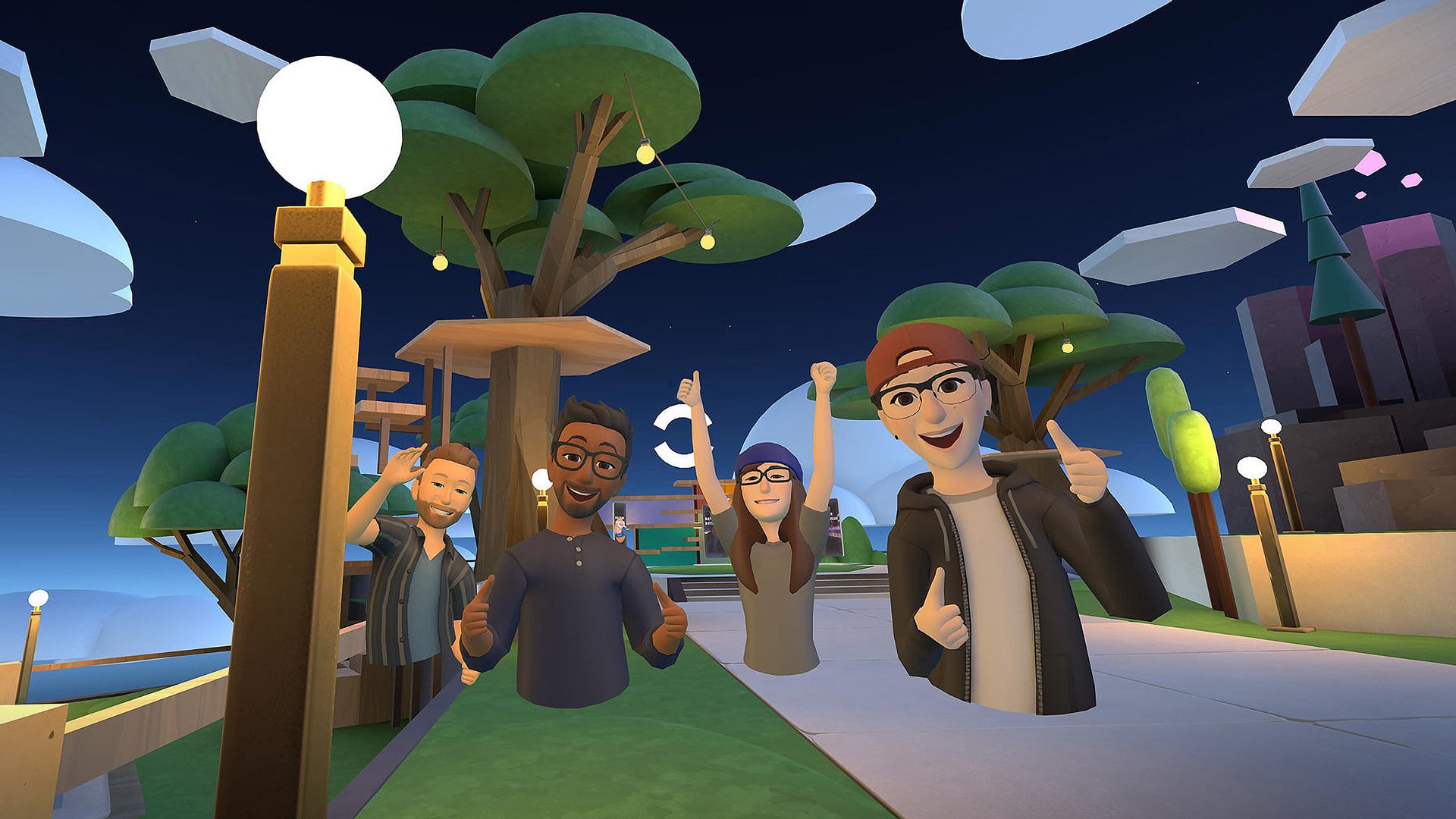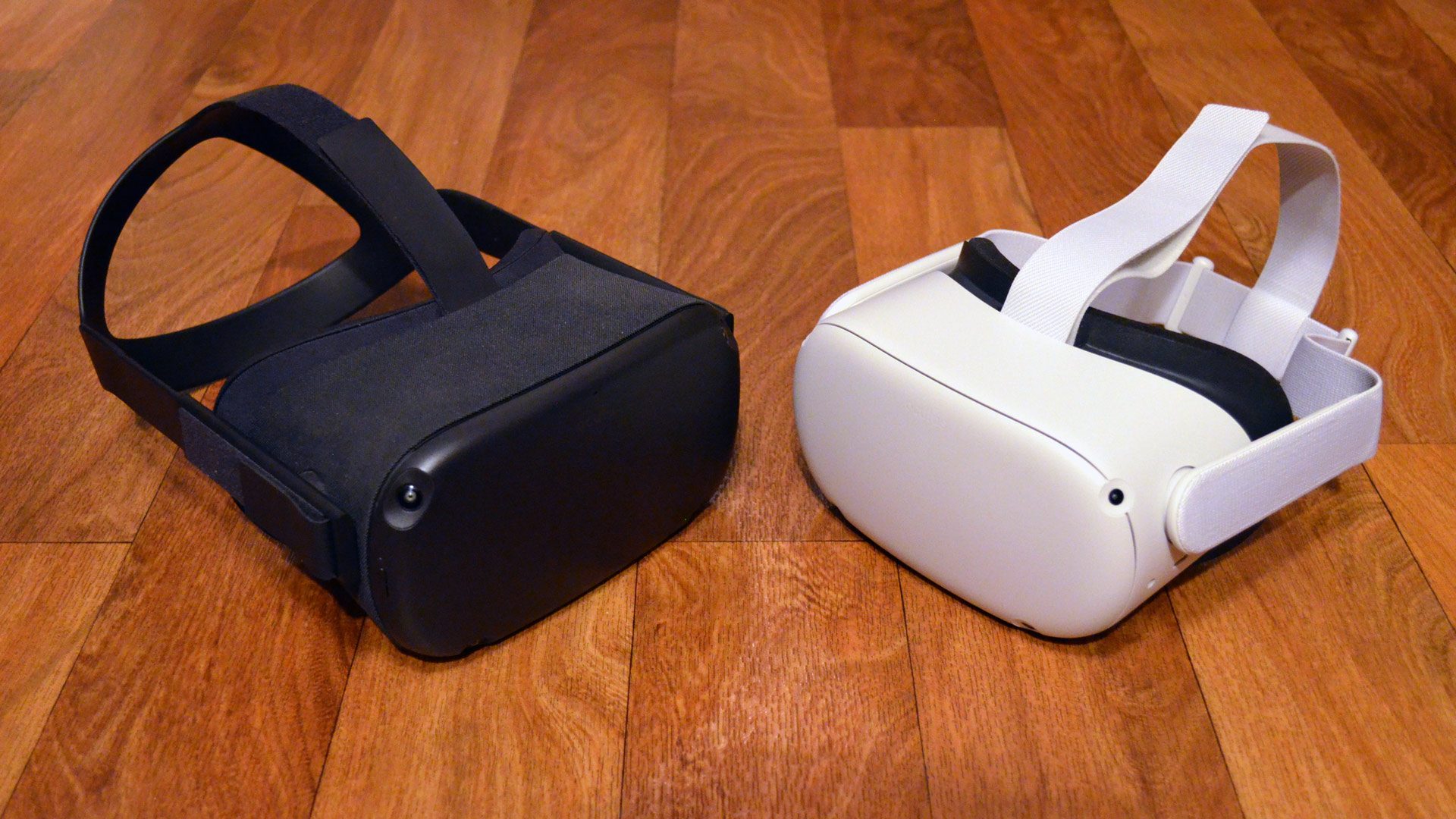Oculus Connect. Facebook Connect. Meta Connect. Whatever the company is calling its annual XR developer conference, it’s been nearly a decade since the first Connect was held—all of them either in-person or exclusively livestreamed. Pandemic notwithstanding, they all had one important thing in common: none of the conferences used the company’s core XR technology to virtually connect people. Why is that?
Started by Oculus in 2014, Connect was where the earliest of early adopters could meet and learn how to make their games and apps happen for the first consumer VR headsets. Engineers, designers, and creatives from around the world made pilgrimage to the California-based event, becoming one of the premier venues for the VR developer community to rub elbows, pitch projects, and grok new hardware. Although the ‘startup magic’ wore off with the event’s gradual hand over from original Oculus founders to the Meta Mothership, the in-person event still manages to maintain legendary status among VR devs as being a great place for networking and learning.
Starting in 2020, Connect was exclusively livestreamed due to the COVID-19 pandemic. There would be no elbow-rubbing. No free candy. No after-session drinks for three long years. Granted, an “in-person presence” is coming back this year for the first time since 2019, however the event is only allowing a “limited” number of attendees to enter the halls of Meta’s Menlo Park headquarters, a stark contrast to when it was held as a full-blown conference at the San Jose McEnery Convention Center in the heart of Silicon Valley.
Let’s just forget the first six years of the conference. For the last three years, Meta only offered a remote experience—standard pre-recorded livestream videos for developers who wanted to attend ‘in-person’, all of whom definitely had VR headsets at the ready. I’m not talking about last year’s Meta Connect room in Horizon Worlds either, which hosted all of the main talks in a collection of theaters so you could watch in VR with a bunch of randos. I’m talking about taking a metaverse convention center to where you might think it logically belongs.
While only Zuckerberg et al know precisely why Meta hasn’t pursued a true VR version of Connect, we can speculate.
Limited Horizons
Let’s pretend for a moment that Meta wants to bring its dev conferences to the metaverse moving forward. If it relies solely on pre-recorded flatscreen videos like it does now, people probably won’t show up because they can always watch later—and more conveniently not in a headset—which means there’s no real conference as such. If it had a live component though with round table discussions and talks with Q&A sessions for attendees—closer to a live conference—then maybe people would want to stay up late in the Eastern Hemisphere to see what’s up. Maybe.
Introduced in 2020 as Facebook Worlds, the budding social VR platform has moved slowly to flush out the basic features already available in other, more successful apps like Rec Room, VRChat, and Roblox—all available on a plethora of devices besides the Quest platform. Meanwhile, Horizon Worlds is only available to Quest users in a handful of countries, including the US, UK, Canada, France, Iceland, Ireland, and Spain. Statistically, most people on planet Earth don’t live in those countries.

Only now is the company’s social platform starting to catch up somewhat by offering up stickier first-party content; like its latest hero shooter Super Rumble, which Meta is ostensibly using as a nucleation point for bigger and better things. Its first-party metaverse could one day become the default choice for users at some point, but the company’s Reality Labs team will need to beat those social apps mentioned above, which have both an earlier lead and wider distribution.
Still, the COVID-19 years could have been a boon to accelerating Horizon Worlds by bringing third-party devs deeper into the fold with a conference as the impetus, although that might have been too large of a risk to bear. While keynote-watching parties are fairly straightforward in social VR (like we saw in the Connect room in Horizon Worlds last year) actually making a VR version of the event at a level Meta can then project to the rest of the world is a pretty daunting task—both technically and conceptually—even for a company with the resources of Meta.
The fact is though the company’s social VR offerings have historically been undercooked, with its Quest-exclusive platform Horizon Worlds still doughy and baking in the oven to this day. There’s no doubt Horizon Worlds could be better, but even if it were, virtualizing such a conference in any meaningful way could present a bigger risk than Meta may be willing to take.
A fully virtualized conference with live participation could be rife with other issues, some of which have no real solution. As with all social VR apps, a speaker’s Internet connection can drop out, audio latency can stymie the flow of conversation, and a single bad actor can completely derail an important moment—all of the sort of unprofessional things that are acceptable on a Friday night in VRChat, but not on the world stage that regularly attracts scrutiny from the wider public.
The former CTO John Carmack was a big proponent of the event, but revealed that some of the reason it didn’t go fully virtual was about how avatars looked:
Now, doing [Connect] in Horizon for real in an ideal world would mean having this sort of arena-scale support with thousands of avatars milling around, at least hundreds in large rooms, and in a completely uniformly shared world. That’s a serious technical challenge and Horizon definitely can’t handle it now, but it’s not an insurmountable one. However, there’s a really huge tension with avatar rendering quality. There was some public mockery about avatar quality earlier this year, and now lots of people internally are paranoid about showing anything but the highest possible quality avatars. And more rendering features are being pushed to increase the quality instead of the quantity.
Functionally, some extra bits might fall to the wayside too, like impromptu hallway chat sessions, sidebars while waiting in line for drinks, and off-site parties—you know, the serendipitous networking stuff that make conferences more worth the time and effort to attend. How can this be recreated in VR? Make people wander virtual hallways to get from one session to another? Not only would that seem like a silly skeuomorphism, but simulating the avatars and voices of hundreds of people in one virtual space—all on the mobile phone hardware that’s inside a Quest 2 headset—is far from trivial.
There probably are solutions to these problems, but they aren’t as obvious as they might seem at first.
Also, let’s not even talk about time zones. Or the lack of free drinks and candy. I think I mentioned that several times actually. While undoubtedly challenging, some things can’t be virtually replicated at all though: new hardware.
You Can’t Try New Hardware Virtually
Connect is one of the events where Meta typically shows off new hardware and gives devs some of their first hands-on previews, which play an important role in how they choose to invest their time and resources. And as the company moves into increasingly complex areas of development, like varifocal optics, retinal resolution, and lightfield passthrough, seeing it is often the next step to believing it.
But what about Quest 2? Released in late 2020, that was the definition of a ‘pandemic headset’, right? It seems like a foregone conclusion that devs would choose to build apps for Quest 2 simply based on the fact that it’s the industry’s most successful consumer VR headset to date, but it’s really not so simple. Quest 2’s success is directly linked to the groundwork the company laid by the original 2019 Quest, Meta’s first (and arguably the first truly viable) 6DOF standalone headset. And Quest 1 did benefit from an extensive hands-on lead up back when the company was still calling it ‘Santa Cruz’.

Maybe Don’t Hold Your Breath
In the end, Meta has consistently decided to not push its core technology as a way for developers to connect, and not trying to solve those problems during a time when the world needed it the most feels like a missed opportunity.
This year’s Connect in September should give us a better idea of whether we’ll ever get back to those heady in-person Connects of years past, or if their plans to further flesh out Horizon Worlds could include putting on larger virtual events. Still, it’s not likely we’ll see Meta hold Connect exclusively—or even partially to any meaningly virtual effect—until more of those social VR pain points can be smoothed over.
Maybe the next generation of mixed reality headsets can cure some of those ills, as in-person attendees can participate alongside their virtual counterparts somehow? Maybe Meta just doesn’t believe enough in Horizon Worlds to make it work? Maybe most devs don’t really need Connect anymore, and virtualizing it won’t serve a meaningful purpose? Let us know what you think in the comments below!







